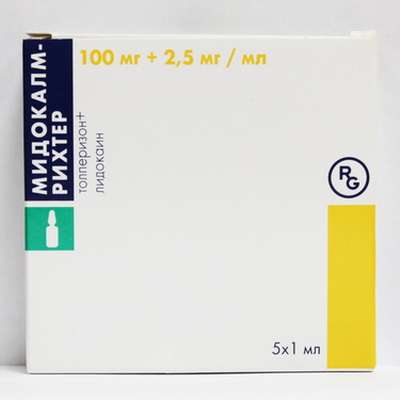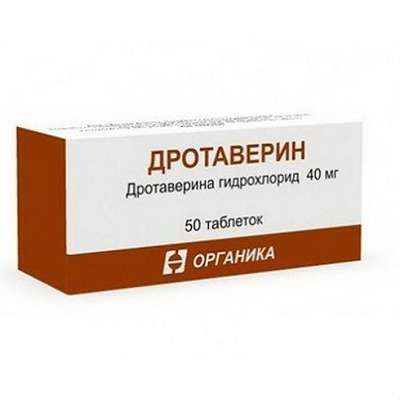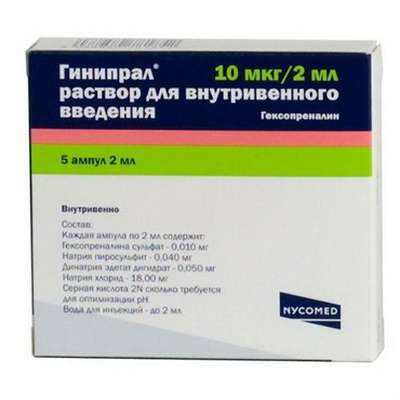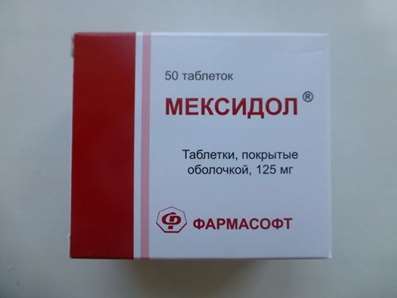Instruction for use: Amdoal
I want this, give me price
Dosage form: tablets
Active substance: Aripiprazole *
ATX
N05AX12 Aripiprazole
Pharmacological group:
Neuroleptics
The nosological classification (ICD-10)
F20 Schizophrenia: Schizophrenic conditions; Exacerbation of schizophrenia; Schizophrenia; Chronic schizophrenia; Dementia praecox; Bleuler's disease; Psychotic discordant; Dementia early; The febrile form of schizophrenia; Chronic schizophrenic disorder; Psychosis of the schizophrenic type; Acute form of schizophrenia; Acute schizophrenic disorder; Cerebral Organic Insufficiency in Schizophrenia; Acute attack of schizophrenia; Schizophrenic psychosis; Acute schizophrenia; Sluggish schizophrenia; Sluggish schizophrenia with apathoabulic disorders; Acute stage of schizophrenia with excitation
F30.9 Manic episode, unspecified: Manic-depressive conditions; Manic attack; Manic episode of manic-depressive psychosis; Mania
F31.1 Bipolar affective disorder, current episode of mania without psychotic symptoms: Mania in bipolar disorders
F31.2 Bipolar affective disorder, current episode of mania with psychotic symptoms: Manic episode of bipolar disorder; Mania in bipolar disorders
Composition
Tablets 1 table.
active substance:
aripiprazole 10 mg; 15 mg; 20 mg; 30 mg
auxiliary substances: lactose monohydrate - 63,077 / 94,615 / 126,153 / 189,23 mg; MCC - 10/15/20/30 mg; corn starch - 6,983 / 10,475 / 13,967 / 20,95 mg; giprolase - 3.8 (5.7) / 7.6 (11.4 mg; magnesium stearate 1.14 / 1.71 / 2.28 / 3.42 mg
Description of dosage form
Tablets are white or almost white, round, biconvex, on one side is engraved. For the dosage of 10 mg - "N74", 15 mg - "N75", 20 mg - "N76", 30 mg - "N77".
Pharmachologic effect
Pharmacological action - antipsychotic, neuroleptic.
Pharmacodynamics
The therapeutic effect of aripiprazole in schizophrenia is due to a combination of partial agonistic activity against D2-dopamine and 5HT1a-serotonin receptors and antagonistic activity against 5HT2-serotonin receptors.
Aripiprazole has a high affinity in vitro for D2- and D3-dopamine receptors, 5HT1a and 5HT2a-serotonin receptors and moderate affinity for D4-dopamine, 5HT2- and 5HT7-serotonin, αl-adrenoreceptors and H1-histamine receptors. Aripiprazole is also characterized by moderate affinity for the sites of serotonin reuptake and lack of affinity for muscarinic receptors. In animal experiments, aripiprazole exhibited antagonism with respect to dopaminergic hyperactivity and agonism with respect to dopaminergic hypoactivity. Interaction not only with dopamine and serotonin receptors explains some clinical effects of aripiprazole.
Pharmacokinetics
Suction
Aripiprazole is rapidly absorbed after oral administration. Eating food does not affect the bioavailability of aripiprazole. Absolute bioavailability with oral administration is 87%. Cmax of aripiprazole in plasma is achieved after 3-5 hours. Css is achieved after 14 days.
Distribution
Aripiprazole is intensively distributed in tissues, Vd - 4.9 l / kg. The pharmacokinetics of aripiprazole in the equilibrium state are proportional to the dose. At a therapeutic concentration of more than 99%, aripiprazole binds to plasma proteins, mainly with albumin. The main metabolite of aripiprazole, dehydroaripiprazole, has the same affinity for D2-dopamine receptors, as does aripiprazole. There were no daily fluctuations in the distribution of aripiprazole and its metabolite dehydroaripiprazole. AUC in the equilibrium state of dehydroaripiprazole is 39% of aripiprazole AUC in the blood plasma.
Metabolism
Slightly subjected to pre-systemic metabolism. Aripiprazole is the main component of the drug in the blood plasma. Aripiprazole is metabolized in the liver by dehydrogenation, hydroxylation and N-dealkylation. In vitro dehydrogenation and hydroxylation of aripiprazole occur with the participation of CYP3A4 and CYP2D6 isoenzymes, and N-dealkylation with the participation of the CYP3A4 isoenzyme.
Excretion
T1 / 2 is approximately 75 hours for fast metabolizers of the isoenzyme CYP2D6 and about 146 hours for slow metabolizers. The total clearance of aripiprazole is 0.7 ml / min / kg, mainly due to excretion by the liver. After receiving a single dose of 14C labeled aripiprazole, approximately 27% of the dose was excreted by the kidneys and approximately 60% by the intestine. Less than 1% of unchanged aripiprazole is determined in urine and approximately 18% of the dose taken is unchanged in the intestine.
Special patient groups
Children. Taking into account the correction for body weight, the pharmacokinetics of aripiprazole and dehydroaripiprazole in adolescents 13-17 years old corresponded to those in adults.
The elderly. There were no differences in the pharmacokinetics of aripiprazole in elderly and adult healthy volunteers. Also, the effect of age on pharmacokinetics in patients with schizophrenia has not been revealed.
Floor. There are no differences in pharmacokinetics in healthy men and women. Also, there was no evidence of gender influence on the pharmacokinetics of aripiprazole in patients with schizophrenia.
Smoking and race. In studies, there was no clinically significant effect of racial differences or the effect of smoking on the pharmacokinetics of aripiprazole.
Kidney diseases. The same pharmacokinetic parameters of aripiprazole and dihydroaripiprazole were revealed in patients with severe kidney disease and young healthy volunteers.
Diseases of the liver. In patients with liver cirrhosis of various degrees (Child-Pugh classes A, B and C) after a single administration of aripiprazole, there was no significant effect of liver dysfunction on the pharmacokinetics of aripiprazole and dehydroaripiprazole. Due to the lack of data in patients with decompensated liver cirrhosis (Child-Pugh class C), it is impossible to draw definitive conclusions about metabolic activity.
Indications for the Amdoal
treatment of schizophrenia in adults;
treatment of manic episodes within the framework of bipolar I disorder and prevention of manic episodes in patients who had a history of manic episodes and a clinical response to treatment with aripiprazole.
Contraindications
hypersensitivity to one of the components of the drug;
senile dementia;
deficiency of lactase, lactose intolerance, glucose-galactose malabsorption;
lactation period;
age to 18 years.
With caution: CVS diseases (ischemic heart disease, including myocardial infarction, chronic heart failure, conduction disorders, conditions predisposing to lowering blood pressure (dehydration, hypovolemia, taking antihypertensive drugs) in connection with the possibility of development of orthostatic hypotension; cerebrovascular diseases, epilepsy, diseases in which convulsions may develop, patients at risk of developing aspiration pneumonia (due to the risk of impaired motor function of the esophagus and aspiration), patients with yshennym risk of hyperthermia, such as intense physical activity, hyperthermia, receiving funds from m-anticholinergic activity in dehydration (due to the ability of neuroleptics to violate thermoregulation) patients with obesity, diabetes, history, pregnancy.
Application in pregnancy and lactation
Adequate and well-controlled studies in pregnant women have not been conducted. Due to the lack of safety data, the drug can be taken during pregnancy only if the potential benefit to the mother exceeds the potential risk to the fetus. Patients should be warned about the need to immediately inform the doctor about the onset of pregnancy against the background of treatment with aripiprazole, as well as about the planned pregnancy. In newborns whose mothers took neuroleptics during the third trimester of pregnancy, there is a risk of developing extrapyramidal disorders and / or withdrawal syndrome in the postpartum period. In newborns, excitation, increased or decreased blood pressure, tremor, drowsiness, respiratory distress syndrome, and eating disorders were noted. Such newborns need careful observation.
During the treatment with aripiprazole, it is recommended to cancel breastfeeding. In studies on animals, data were obtained on the isolation of the drug with milk. There are no data on the penetration of aripiprazole into breast milk.
Side effects
The most frequently reported side effects in placebo-controlled studies were akathisia and nausea, each of which occurred in more than 3% of patients who received aripiprazole orally.
The side effects listed below were more frequent (≥1 / 100) than in the placebo group, or were identified as adverse reactions possibly associated with the drug (*). The frequency of side effects is shown in accordance with the following scale: very often -> 10%; often -> 1% and <10%; infrequently -> 0.1% and <1%; rarely -> 0.01% and <0.1%; very rarely - <0.01%.
From the side of the psyche: often - anxiety, insomnia, anxiety; infrequently - depression *.
From the side of the nervous system: often - extrapyramidal disorders, akathisia, tremor, dizziness, drowsiness, sedation, headache.
From the side of the organ of vision: often - blurred vision.
From the heart and vascular system: infrequently - tachycardia *, orthostatic hypotension *.
From the digestive system: often - indigestion, vomiting, nausea, constipation, drooling.
Systemic disorders and complications at the injection site: often - fatigue.
Other observations: In the treatment of aripiprazole schizophrenia, manic episodes and type I bipolar disorder, there was a lower incidence of extrapyramidal symptoms (EPS), including parkinsonism, than in patients treated with haloperidol and was similar to patients receiving olanzapine. The incidence of EPS in patients receiving aripiprazole for manic episodes and type I bipolar disorder was higher in comparison with the lithium drug treatment group.
Postmarketing application
Spontaneous reports of adverse reactions are given below. Based on the available data, it is impossible to determine the frequency of occurrence of these effects.
Violations from the blood and lymphatic system: leukopenia, neutropenia, thrombocytopenia.
Immune disorders: allergic reactions (anaphylactic reactions, angioedema, including swelling and swelling of the tongue, swelling of the face, skin itching, urticaria).
On the part of the endocrine system: hypercalcemia, diabetes mellitus, diabetic ketoacidosis, diabetic ketoosmolar coma.
From the side of metabolism and nutrition: weight gain, weight loss, anorexia, hyponatremia.
From the side of the psyche: agitation, nervousness; suicidal attempts, suicidal thoughts, perfect suicide.
From the nervous system: speech disturbance, malignant neuroleptic syndrome, epileptic seizure.
From the heart and vascular system: prolongation of QT interval, ventricular arrhythmia, sudden death for unknown reason, angina attack, polymorphic ventricular pirouette tachycardia, bradycardia, syncope, increased blood pressure, venous thromboembolism (including thromboembolism of pulmonary arterial branches and deep vein thrombosis ).
From the respiratory system, chest and mediastinum: oropharyngeal spasm, laryngospasm, aspiration pneumonia;
From the digestive system: pancreatitis, dysphagia, discomfort in the abdomen, discomfort in the stomach, diarrhea.
From the hepatobiliary system: jaundice, hepatitis, increased activity of ALT, AST, GGT, APF.
From the musculoskeletal system and connective tissue: rhabdomyolysis, myalgia, rigidity.
From the urinary system: urinary incontinence, urinary retention.
From the part of the reproductive system and mammary glands: priapism.
Pregnancy, postpartum period, perinatal conditions: withdrawal syndrome in newborns.
Systemic disorders and complications at the site of administration: disorders of temperature regulation (hypothermia, pyrexia), chest pain, peripheral edema.
Laboratory studies: increased activity of CK, increased blood sugar concentration, fluctuations in blood sugar concentration, increased concentration of glycosylated hemoglobin.
Interaction
In connection with the inherent antipiprazole antagonism to αl-adrenergic receptors, there is a possibility of enhancing the effect of some antihypertensive agents. Since aripiprazole has an effect on the central nervous system, one should beware of simultaneous intake of alcohol or drugs that affect the central nervous system. this can lead to increased side effects, such as sedation. There was no significant effect of H2-blocker of histodyne receptors of famotidine, which causes potent inhibition of hydrochloric acid secretion in the stomach, on the pharmacokinetics of aripiprazole.
Caution should be exercised when using aripiprazole with medications that may cause prolongation of the QT interval.
Various routes of metabolism of aripiprazole are known, including with the participation of CYP2D6 and CYP3A4 isoenzymes. In studies in healthy people, potent inhibitors of the isoenzyme CYP2D6 (quinidine) and the isoenzyme CYP3A4 (ketoconazole) reduced the clearance of aripiprazole when ingested by 52 and 38%, respectively. Therefore, the dose of aripiprazole should be reduced when used in combination with inhibitors of CYP3A4 isozymes (itraconazole and HIV protease inhibitors) and CYP2D6. After the cancellation of inhibitors of CYP3A4 and CYP2D6 isoenzymes, the dose of aripiprazole should be returned to the initial dose.
When aripiprazole is used with weak inhibitors of CYP3A4 isoenzymes (diltiazem, escitalopram) or CYP2D6, a small increase in the serum aripiprazole concentration should be expected.
The intake of 30 mg of aripiprazole together with carbamazepine, a potent inducer of the CYP3A4 isoenzyme, was accompanied by a 68% and 73% reduction in Cmax and AUC of aripiprazole, respectively, and a 69% and 71% decrease in Cmax and AUC of its active metabolite dehydroaripiprazole, respectively. When using aripiprazole together with carbamazepine, a dose of aripiprazole should be doubled. Similar effects can be expected for other powerful inducers of CYP3A4 isoenzymes (rifampicin, rifabutin, phenytoin, phenobarbital, primidone, efavirenz, nevirapine, St. John's wort) and CYP2D6. After the cancellation of the powerful inductors of the CYP3A4 and CYP2D6 isoenzymes, the dose of aripiprazole should be reduced to the recommended dose. The isozymes CYP1A1, CYP1A2, CYP2A6, CYP2B6, CYP2C8, CYP2C9, CYP2C19 and CYP2E1 do not participate in the metabolism of aripiprazole in vitro, and it is unlikely that it interacts with drugs and other factors (eg smoking) capable of inhibiting or activating these enzymes.
Simultaneous administration of lithium or valproate with aripiprazole did not have a clinically significant effect on the pharmacokinetics of aripiprazole.
In clinical studies, aripiprazole at doses of 10-30 mg / day had no significant effect on the metabolism of substrates of isoenzymes CYP2D6 (dextromethorphan), CYP2C9 (warfarin), CYP2C19 (omeprazole, warfarin) and CYP3A4 (dextromethorphan). In addition, aripiprazole and its main metabolite dehydroaripiprazole did not change the metabolism with the participation of the CYP1A2 isoenzyme in vitro. The clinically significant effect of aripiprazole on drugs metabolized with the participation of these isoenzymes is unlikely.
Simultaneous reception of lithium, lamotrigine or valproate with aripiprazole does not lead to clinically significant changes in the concentrations of lithium, lamotrigine or valproate.
Dosing and Administration
Inside, once a day, regardless of food intake.
Schizophrenia. The recommended initial dose is 10-15 mg once a day. The maintenance dose is 15 mg per day. The drug is effective at doses of 10 to 30 mg / day. An increase in the efficacy of doses above 15 mg / day has not been demonstrated, but it may be necessary for some patients. The maximum daily dose should not exceed 30 mg.
Manic episodes in bipolar disorder. The initial dose is 15 mg / day as a monotherapy or in combination. Some patients may require a higher dose. The maximum daily dose should not exceed 30 mg.
Prevention of manic episodes with type I bipolar disorder. For the prevention of manic episodes in patients who previously took aripiprazole as monotherapy or in combination, continue treatment at the previous dose. Correction of the daily dose, including its reduction, is performed in accordance with the patient's condition.
Special patient groups
Patients with renal insufficiency. Correction of the dose when prescribing the drug to patients with renal insufficiency is not required.
Patients with hepatic insufficiency. Correction of the dose when prescribing the drug to patients with renal insufficiency is not required. However, patients with severe hepatic insufficiency should be cautious to prescribe a daily dose of 30 mg.
Patients over 65 years of age. Correction of the dose is not required.
The effect of sex on the dosing regimen. Dosage regimen for patients of both sexes is the same.
Dosage with concomitant therapy. With the simultaneous use of AmdoalŽ and powerful inhibitors of CYP2D6 or CYP3A4 isoenzymes, the dose of AmdoalŽ should be reduced by a factor of 2. With the cancellation of inhibitors of isoenzymes CYP2D6 or CYP3A4, the dose of AmdoalŽ should be increased. AmdoalŽ should be used without changing dosing if it is prescribed as adjunctive therapy in patients with major depressive disorder. With the simultaneous use of AmdoalŽ and CYP3A4 isoenzyme inducers, the dose of AmdoalŽ should be doubled. An additional dose increase of AmdoalŽ should be made taking into account clinical indications. With the cancellation of inducers of the isoenzyme CYP3A4, the dose of AmdoalŽ should be reduced. When prescribing several drugs that inhibit the isoenzymes CYP2D6 and CYP3A4, the possibility of reducing the daily dose of AmdoalŽ should be considered.
Overdose
During clinical trials and post-marketing use, cases of intentional or unintentional use of the drug by adult patients at doses up to 1260 mg, not accompanied by a fatal outcome, were detected.
Symptoms: lethargy, increased blood pressure, tachycardia, nausea, vomiting, diarrhea, drowsiness.
There have been reported cases of overdose of aripiprazole in children (up to 195 mg), not accompanied by a fatal outcome.
Symptoms: drowsiness, transient loss of consciousness, extrapyramidal disorders.
Treatment: administration of activated charcoal (50 g, administered 1 h after aripiprazole, reduced AUC and Cmax of aripiprazole by 51 and 41%, respectively), maintenance therapy, adequate airway patency, oxygenation, effective ventilation and symptomatic treatment; monitoring of CAS function indicators with ECG registration for arrhythmia detection. It should be carefully monitored before all symptoms disappear.
The effectiveness of hemodialysis is unlikely (almost not excreted by the kidneys in unchanged form and is largely associated with plasma proteins).
special instructions
Since the improvement of the patient's condition in the treatment with neuroleptics may take several days, patients should be closely monitored. Propensity to suicidal thoughts and attempts, characteristic for psychoses, can arise in a short time after the beginning of treatment or a change of the drug. Therefore, such patients should be carefully observed.
Violations from the CVS. Aripiprazole should be used with caution in patients with SSS (myocardial infarction or history of coronary artery disease, heart failure, conduction disorders), cerebrovascular disorders, risk factors for arterial hypotension (dehydration, hypovolemia, antihypertensive medications), arterial hypertension, including progressive and malignant .
When using neuroleptics, vein thrombosis can develop. Since patients receiving antipsychotics may have predisposing factors to vein thromboembolism, a thorough examination of patients prior to treatment with aripiprazole should be carried out and preventive measures taken during treatment.
Conductivity disorders. The frequency of prolongation of the QT interval when treated with aripiprazole corresponds to that of a placebo. However, in patients with a family history of QT interval prolongation, care should be taken with aripiprazole as with other antipsychotics.
Late dyskinesia. The risk of developing tardive dyskinesia increases with the duration of therapy with antipsychotics, so when symptoms of tardive dyskinesia appear during treatment, you should reduce the dose or cancel the drug. After the withdrawal of therapy, these symptoms may temporarily increase or even appear for the first time.
Malignant neuroleptic syndrome. In the treatment with neuroleptics, the development of a life-threatening neuroleptic malignant syndrome (hyperpyrexia, muscle rigidity, mental disorders and instability of the autonomic nervous system, including pulse and blood pressure instability, tachycardia, sweating and arrhythmias) is possible. In addition, sometimes it is possible to increase the activity of CK, the occurrence of myoglobinuria (rhabdomyolysis) and acute renal failure. In case of symptoms of malignant neuroleptic syndrome or unexplained fever, the drug should be canceled.
Convulsive seizures. When treating aripiprazole, cases of convulsive seizures were noted. Therefore, care should be taken when treating patients with seizures in history or suffering from disorders in which they can develop.
Elderly patients with senile dementia. The drug is not approved for the treatment of senile psychoses, t. the risk of death and development of cerebrovascular complications increases.
Hyperglycemia and diabetes mellitus. Hyperglycemia (in some cases, severe, with ketoacidosis), which can lead to hyperosmolar coma and even death, has been noted in patients taking atypical antipsychotics. Although the relationship between the admission of atypical antipsychotics and hyperglycemia remains unclear, patients who have diabetes mellitus need regular monitoring of blood glucose concentrations when taking atypical antipsychotics. In patients with risk factors for diabetes mellitus (obesity, the presence of diabetes in a family history), when taking atypical antipsychotics, it is necessary to determine the blood glucose concentration at the beginning of the course and periodically in the process of taking the drug. All patients taking atypical antipsychotics need constant monitoring of symptoms of hyperglycemia, including increased thirst, frequent urination, polyphagia, and weakness.
Hypersensitivity. Like other drugs, aripiprazole can cause hypersensitivity reactions.
Increase in body weight. There was no evidence of the effect of aripiprazole on weight gain.
Dysphagia. Admission of neuroleptics, including aripiprazole, causes a violation of esophageal motility and aspiration. Patients at risk of aspiration pneumonia aripiprazole and other antipsychotics should be used with caution.
Lactose intolerance. The drug contains lactose, so it should not be taken to patients with such rare hereditary diseases as galactose intolerance, lactase Lappa deficiency or glucose-galactose malabsorption syndrome.
Influence on the ability to drive vehicles and work with mechanisms. During the treatment period, care must be taken when engaging in activities that require an increased concentration of attention and speed of psychomotor reactions.
Release form
Tablets, 10 mg, 15 mg, 20 mg and 30 mg. In the contour acheikova packing of the combined three-layer material polyamide / aluminum / PVC (PA / Al / PVC) and aluminum foil for 15 pcs. 1 or 2 contour squares in a pack of cardboard.
Conditions of leave from pharmacies
On prescription.
Storage conditions of the drug Amdoal
At temperatures not higher than 30 ° C, in the original packaging.
Keep out of the reach of children.
Shelf life of the drug Amdoal
3 years.
Do not use after the expiry date printed on the package.

 Cart
Cart





